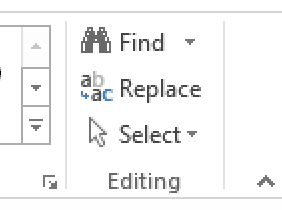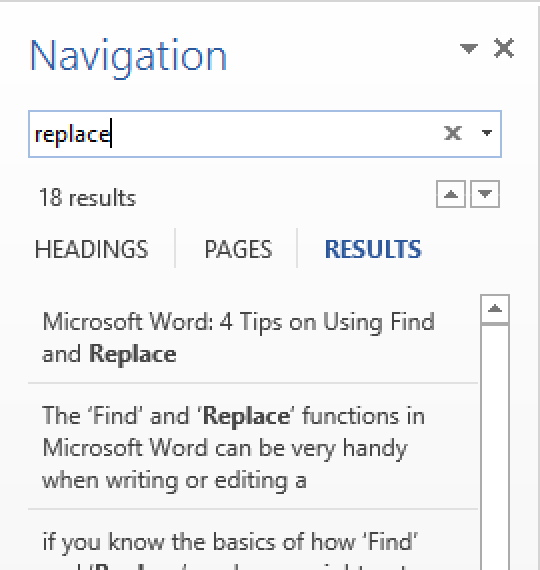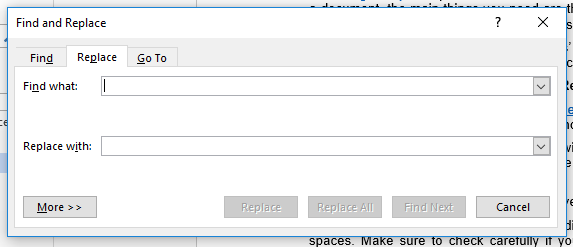- 3-minute read
- 10th February 2017
Microsoft Word: 4 Tips on Using Find and Replace
The ‘Find’ and ‘Replace’ functions in Microsoft Word can be very handy when writing or editing a document. They’re also more versatile than most people realise. So even if you know the basics of how ‘Find’ and ‘Replace’ work, you might not know all of the following.
1. Accessing Find and Replace
The most basic aspect of using ‘Find’ and ‘Replace’ in Microsoft Word is knowing how to access them! In Word 2010 or later, this can be done in two ways.
One is via the ‘Editing’ panel on the ‘Home’ tab of the main ribbon. Here, you’ll find both ‘Find’ and ‘Replace’ buttons. The former opens the navigation sidebar, while the latter opens a separate window.

The second option is using keyboard shortcuts, which can save time. Hitting ‘Ctrl + F’ opens the navigation sidebar. Hitting ‘Ctrl + H’ opens the ‘Find and Replace’ window.
Either option will then let you type a word or phrase and search for it in the document.
2. The Navigation Pane
The navigation pane opens on the left side of the screen when using the ‘Find’ function.

To search a document, the main things you need are the search bar (where you can type terms to search for them) and the ‘Results’ section, which displays all the times a term appears in the document.
You’ll notice that there are also ‘Headings’ and ‘Pages’ options here. These let you jump to different sections or pages in your work, so can be useful when navigating a large document.
Find this useful?
Subscribe to our newsletter and get writing tips from our editors straight to your inbox.
Subscribe to Beyond the Margins and get your monthly fix of editorial strategy, workflow tips, and real-world examples from content leaders.
3. Using Replace Effectively
As well as letting you search for terms, the ‘Replace’ function lets you replace them with something else. You’d probably guessed this, but we thought we’d eliminate any doubt.

To do this, open the ‘Find and Replace’ window and search for a term, using ‘Find Next’ to navigate between results. You can then type a new term into the ‘Replace with’ section and click ‘Replace’ to make the change.
You can also click ‘Replace All’ to replace every example of the term you’ve searched for at once.
This can be very useful for things such as finding repeatedly misspelled terms or accidental double spaces. Make sure to check carefully if you use ‘Replace All’, though, as you don’t want to accidentally replace something you didn’t mean to!
4. Advanced Options
Both functions also allow you to search for very specific things in a document, including non-textual elements such as formatting. To do this, you’ll need to open a search window (either via the ‘Replace’ function or by using ‘Advanced Find’).

Once you have a search window open, you can click the ‘More > >’ button to reveal additional options. Some of these are immediately available, while others have to be accessed via the ‘Formatting’ and ‘Special’ dropdown menus at the bottom of the screen.





